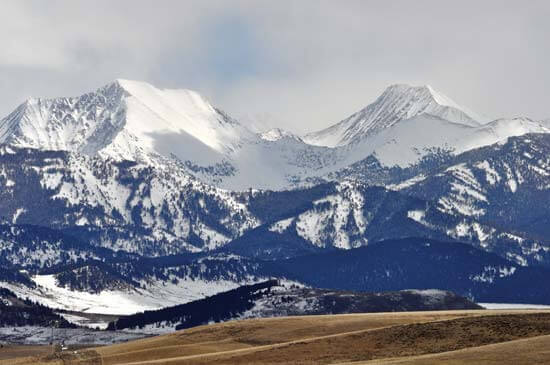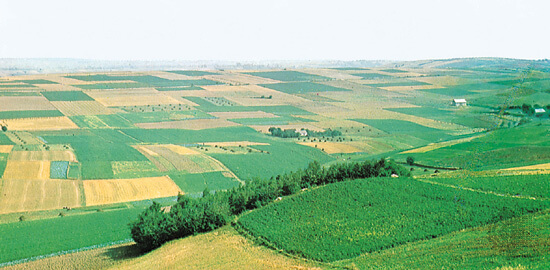Earth’s landforms are one of the major topics of various Bank and Government exams. The following article covers important points about the four major types of landforms on Earth.
What are Landforms?
Landforms are topographic features on the surface of earth formed by processes such as volcanic activities, movement of tectonic plates, sediment deposition, water and wind erosion. These processes happen over a prolonged period of time (sometimes millions of years). For instance, it took 6 million years for the Colorado river to form the Grand Canyon in Arizona.
The highest landform on Earth is the Mount Everest, which measures at 8,850 meters above the sea level and the deepest landform is the Mariana Trench (in the Pacific Ocean), which is approximately 10,916 meters deep.
Four major types of landforms on earth
Mountains
Hills
Plateaus
Plains
Let us now study them in detail:
Mountains

Mountains are landforms that prominently stretch above their surrounding land in a limited area. They’re usually in form of a peak and exhibit slopes that are steep. Mountains are usually formed due to volcanic/tectonic activities (movement of plates under the Earth).
Mountains rarely occur individually, they’re usually part of elongated chains. When a series of such chains are linked together, they constitute a mountain belt.
Mountains erode over time, through glaciers, rivers and weather conditions. Mountains usually aren’t used for agriculture, since the climate and topography aren’t hospitable for it. Mountains are mostly used for recreational purposes such as mountaineering and for extraction.
Hills

Hills are lands that rise high above the surrounding area (like a bump on the surface of Earth). But unlike mountains, hills usually do not have steep slopes, and often have distinct summits. Hills are usually shorter than mountains, and are easier to climb. Some geographers in the past considered mountains as hills that have heights greater than 1,000 ft (above sea level). However, this theory was discarded.
Hills are formed through natural geological activities. One such activity is called ‘Faulting’. Faulting happens due to the constant movements of rocks underneath the Earth’s surface, which results in shift in the landscapes. Sometimes, hills that are formed by faulting become mountains. For instance, the Himalayas.
Other processes that form hills are erosion caused by rivers, when bits of sediments, soil and rocks get washed away by them and pile up at some other place.
Plateaus

Plateaus are elevated, flat highland areas that rise significantly above the surrounding area, with one of more sides having steep slopes. Plateaus are remarkably flatter. Some of them are part of mountain belts. Plateaus take up almost 1/3rd of the Earth’s surface and are present on every continent. The highest and the largest plateau is the Tibetan Plateau, which is in Asia.
Plateaus are formed by a number of natural processes such as erosion caused by water and glaciers, upwelling of magma or extrusion of lava. Most plateaus have a hard-durable surface called the caprock, formed due to erosion of soft rock. Caprocks protect the soil underneath the plateau from getting eroded.
When river water cuts through plateaus, they form valleys, like the Columbia plateau, which is cut through by River Columbia.
Plains

Plain is a board and relatively flat landform, that sweep over a large area of land. Plains cover more than 1/3rd of Earth’s land area. Plains occur on land as well as under the ocean, as coastal plains, plateaus, along valleys or on doorsteps of mountains.
Plains, like mountains, hills and plateaus, are formed by various natural processes. Some are formed when water/ice erode away rocks/dirt (sediment) down hillsides and deposit it elsewhere. Plains are formed when layer upon layer of sediment is laid down this way. Other activities that form plain lands are volcanic activities, flow of lava and movement of rivers.
We hope the above article briefs you about the major landforms on Earth. Stay tuned for Part 2 of Landforms on Earth.

The most comprehensive online preparation portal for MBA, Banking and Government exams. Explore a range of mock tests and study material at www.oliveboard.in

